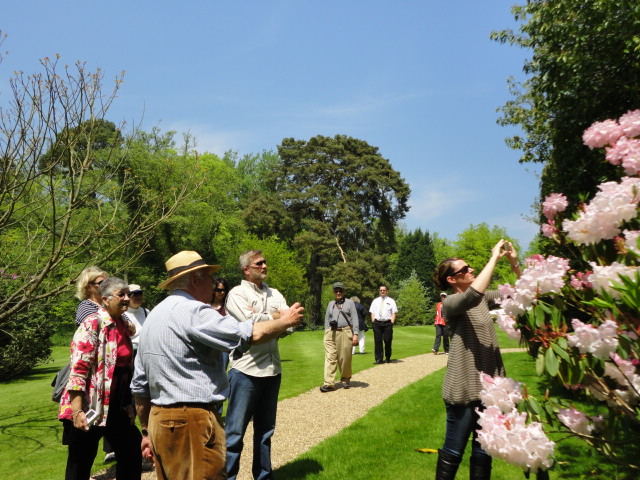
Lismore Castle Gardens
Originally built in 1185, Lismore Castle was acquired by Sir Walter Raleigh in 1589 who later sold it to Richard Boyle. It has been the Irish home of the Dukes of Devonshire of Chatsworth House since 1753 when the two families were connected by marriage and the 4th Duke of Devonshire inherited Lismore. Today it is home to seven acres of gardens all set within the historic Lismore Castle walls.
The historic gardens are divided into two very distinct and different halves. The Upper Garden is a complete example of the 17th century walled garden first constructed here by Richard Boyle, the 1st Earl of Cork, in about 1605. The outer walls and terraces remain and the plantings have changed to match the tastes of those living within the castle. The garden is a mix of ornamental borders and productive areas, with vegetables, herbs, fruit and flowers grown for the kitchen and house.
The Lower Garden was mostly created in the 19th century for the 6th Duke of Devonshire, Joseph Paxton’s patron. Meandering paths lead you through this informal setting of trees and shrubs and out onto open lawns. The stately yew avenue in the heart of the garden is much older than the garden itself. From the spring flowering magnolias and rhododendrons through to the later flowering shrubs and borders there is always something in bloom.
The gardens contain a fine collection of magnolias, camellias, rhododendrons, herbaceous borders and a remarkable yew walk where Edmund Spenser is said to have written ‘The Faerie Queene’. Since 1999 several pieces of contemporary sculpture have been installed in the gardens including works by Antony Gormley and Eilis O’Connell. Lismore Castle Arts, a contemporary art gallery also located within the gardens, displays temporary exhibitions of national and international artists.

 Passionate about beautiful gardens? Experience the finest gardens on one of our small and friendly group tours.
Passionate about beautiful gardens? Experience the finest gardens on one of our small and friendly group tours.
 Ready to book?
Ready to book? 
